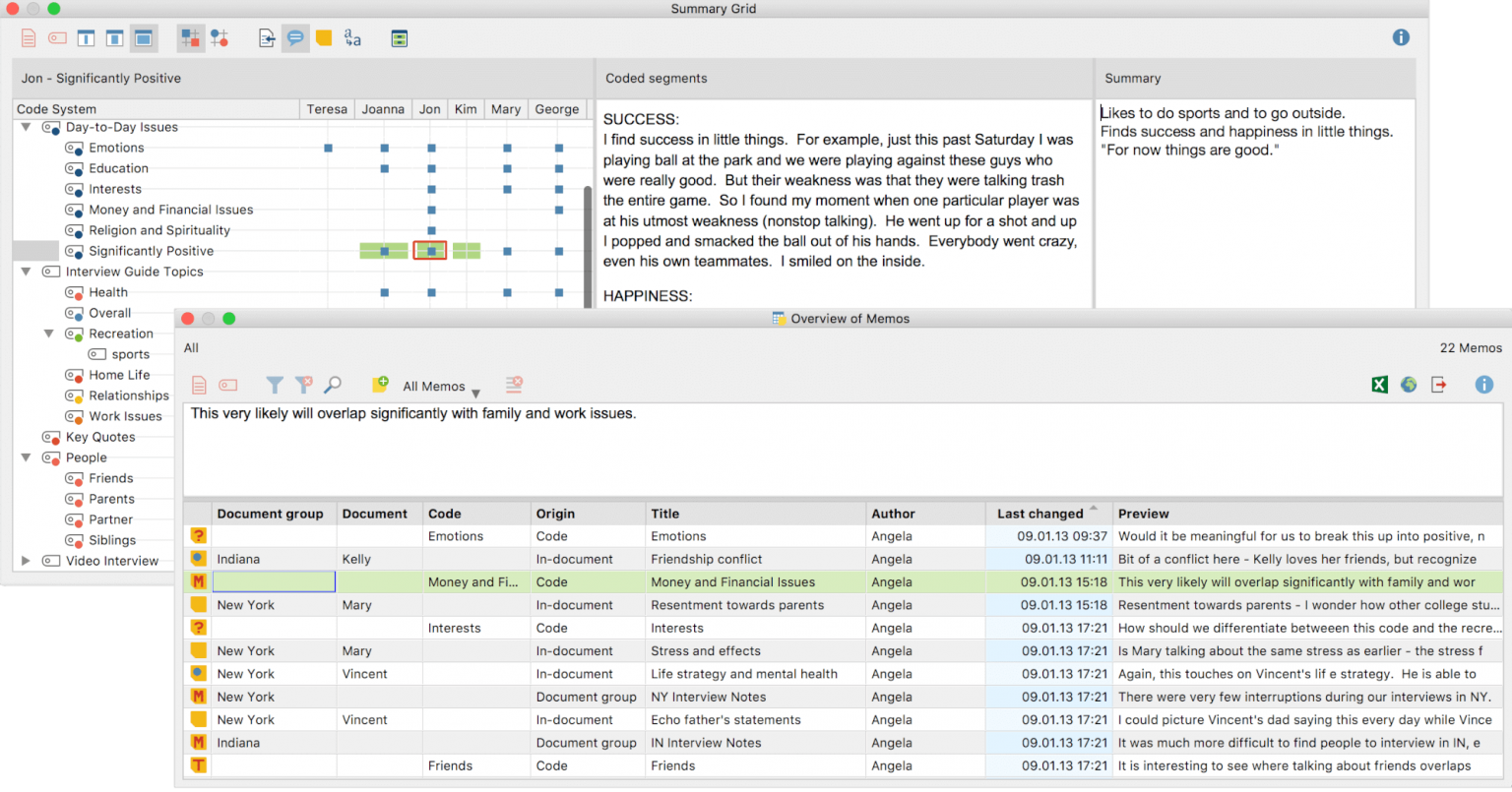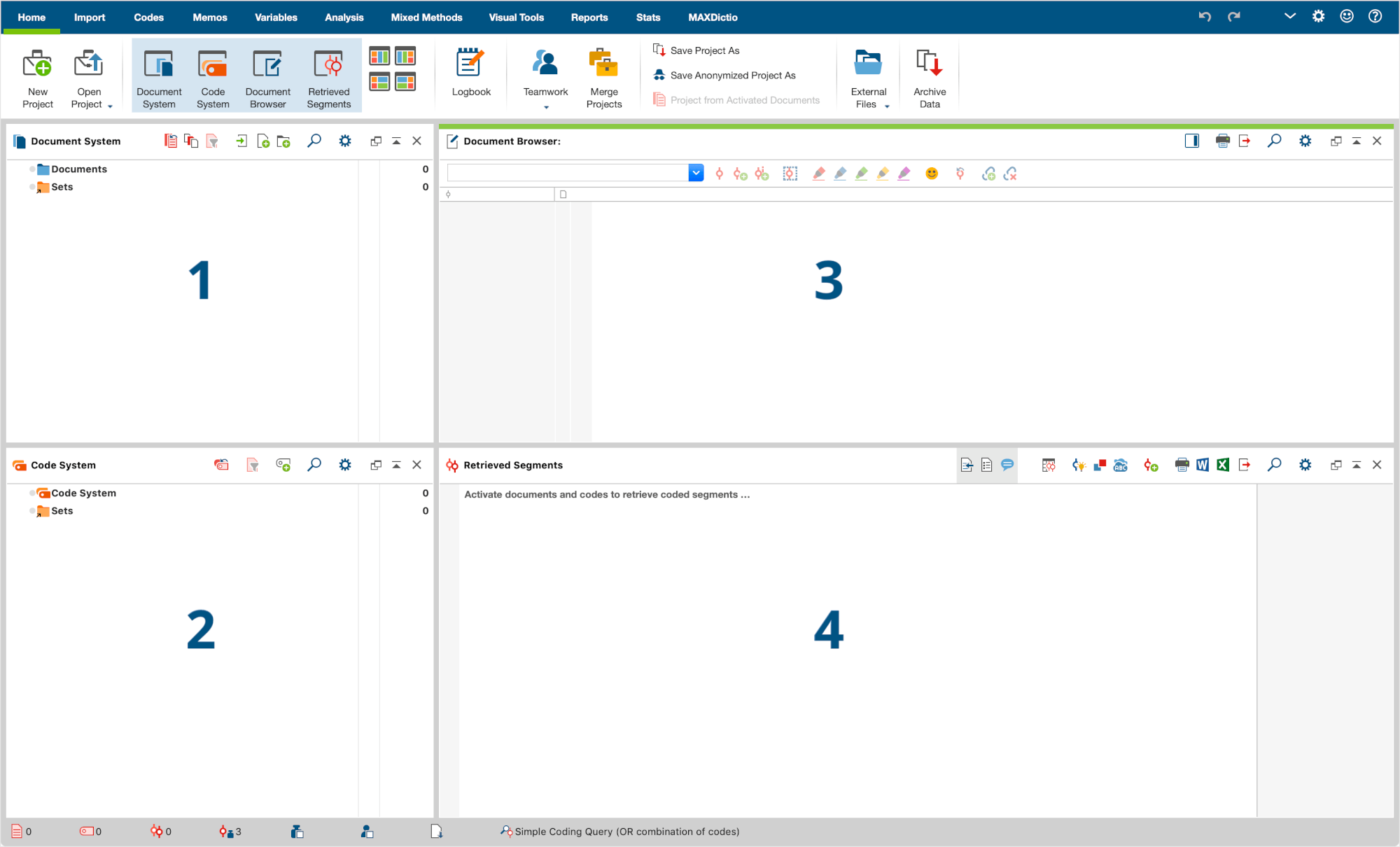

Of course, both programs are not as limited as it may seem. Therefore, it is set out to find patterns within a text, instead of applying a well trimmed analysis tool. Where Content Analysis usually creates a proper set of well defined categories and applies it to the text, Grounded Theory creates a vast abundance of codes during “Open Coding” and after that begins to link, merge and relate the codes to each other (called “Axial Coding”). Strauss and Corbin 2010) that works quite contrary to Qualitative Content Analysis. In this, ATLAS.ti joins forces with a method called “Grounded Theory” (e.g. For example, a document group “gender: female” can be linked to a document “Interview with Mrs P.” to identify the interviewee as a woman. However, “document groups” or “code groups” can be used as quasi-dichotomous variables for a similar purpose. In such a system “document variables” make little sense. In this ATLAS.ti creates a system of linkages between different entities (documents, codes, segments, memos etc.).
#Maxqda document codes code#
A code can be defined as “being part of” another code. A text segment can be formally defined as “contradicting” another text segment. The same Code System as above, displayed in the “Network” tool of ATLAS.ti.įurther on, researchers can create semantic linkages between the different elements. “Coding” a segment here, is not putting it “into a category” but rather linking a text segment to a label (compare: Friese 2019, 192-194). Each segment that is created becomes a node in a network. In its core, ATLAS.ti is a system of nodes and relations. The analysis is usually done with a Mixed Methods approach that strongly incorporates qualitative and quantitative methods.ĪTLAS.ti on the contrary neither uses code hierarchies, nor variables. The coded segments are sorted into a tree structure built of several layers of codes and sub-codes. In sorting everything into well defined, hierarchical categories, the program joins forces with the method “Qualitative Content Analysis” ( Mayring 2015, Kuckartz 2014). MAXQDA even features its own integrated statistics modul that works as a slim and light version of SPSS (Compare: Rädiker, Kuckartz 2019, 129-131) A simple Code System in MAXQDA with three hierarchical layers displayed in MAXMaps. These document variables allow for close cooperation with many statistical programs and follow exactly the same logic.

For each document individual variables can be defined.

Everything is sorted into well defined categories. MAXQDA works like a classification system.
#Maxqda document codes software#
While MAXQDA follows the structure of a relational data basis, ATLAS.ti is organized like a graph data base and this strongly influences the way each software is used. Differences: Table or Network logicĪlthough both basically use SQL-databases, there is a striking difference in their internal logic. The interfaces look very similar, yet strong differences lay bellow the surface. Furthermore, they count the segments and offer many options to visualize and explore the structured data. By this, they bring together segments of different documents and/or data types under one keyword (usually called: code). They belong to the group of QDAS, qualitative data analysis software, a type of software that is primarily used to structure text by manually assigning labels to individual segments (also images, audio or video are possible). Commonalities: Twins on the SurfaceĪTLAS.ti and MAXQDA are both around since the 1990s and quite prominent in qualitative sociology. Soon, I noticed major differences that had strong methodological implications. Yet strangely enough, this proved difficult to do and seemed not to make much sense. To familiarize myself with ATLAS.ti, I rebuilt the data base of my master thesis within it. As a freelancing software trainer, I was time and again asked to offer ATLAS.ti as well, so I moved on from a software I already knew well, to another one that looked very similar. However, I never noticed, how MAXQDA structured my research too. It’s core function is to structure text by segmenting it with labels. Since my master thesis ( Müller 2017), I am using MAXQDA. The implicit potentials and constrains of each (and any) software commonly drive our research because we too often follow the road that we already know best. Yet when we look under the hood, we see strong differences: one follows the logic of a relational data base and sorts everything into neat categories and the other operates like a graph data base that links different entities to form a large network. On the surface MAXQDA and ATLAS.ti seem almost identical.


 0 kommentar(er)
0 kommentar(er)
